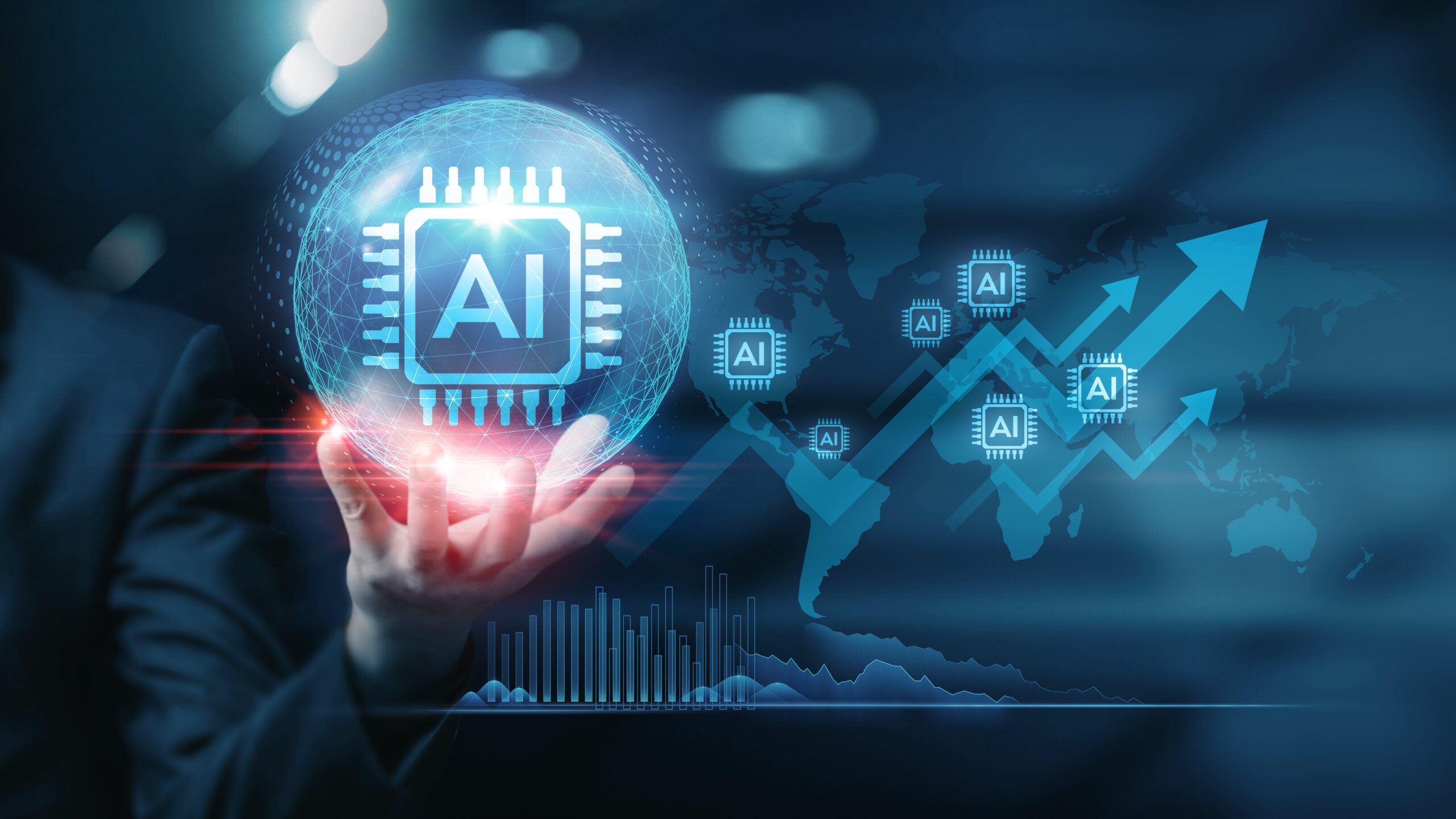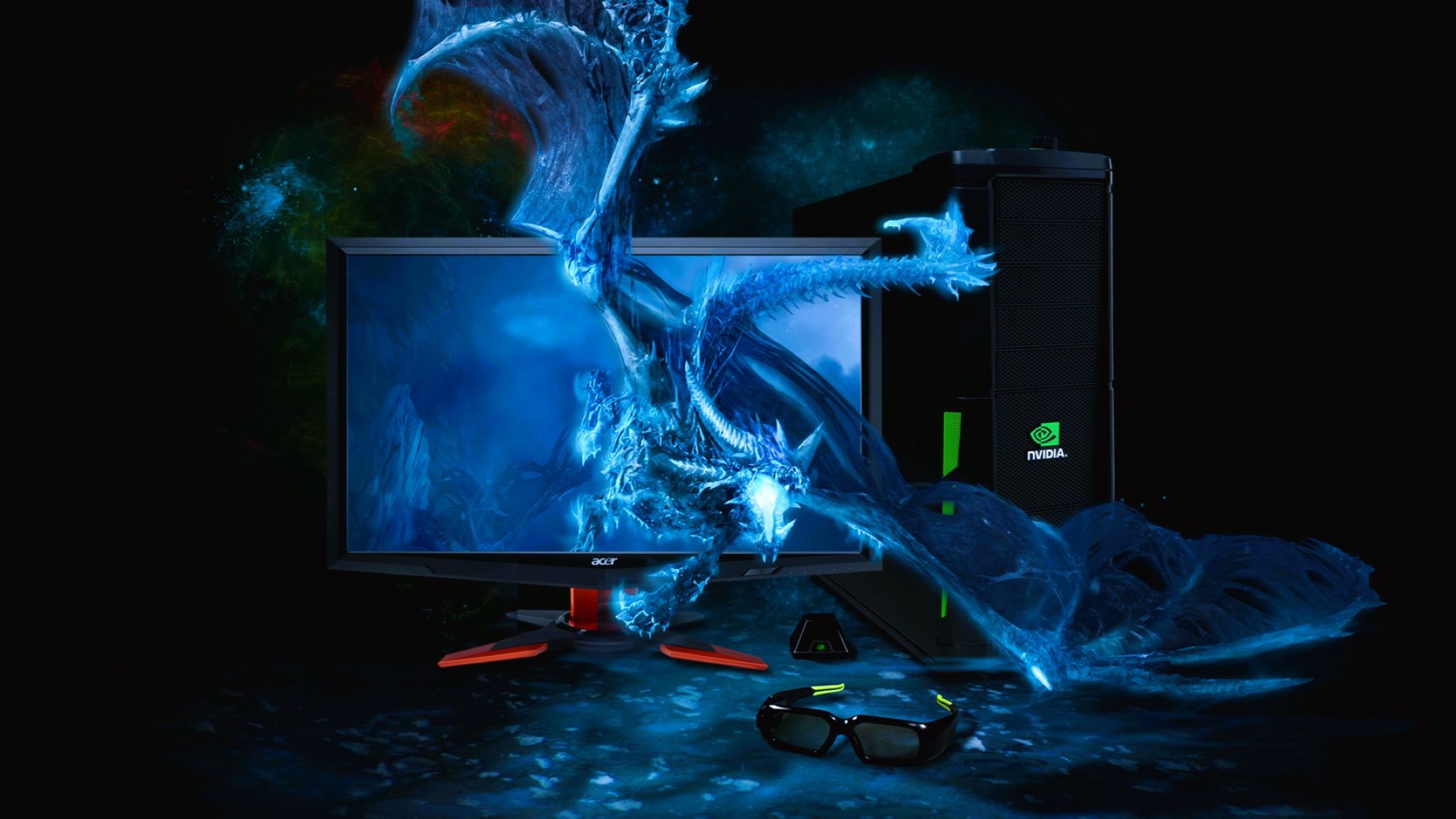The world of technology is changing fast, and one company is taking the lead—Nvidia. Once known primarily for its gaming GPUs, Nvidia has skyrocketed in value, surpassing tech giants like Microsoft and Apple. How did this happen? The answer lies in one of the biggest technological revolutions of our time: artificial intelligence (AI). In this article, we’ll dive deep into how Nvidia climbed to the top, the role of AI in this shift, and what it means for the future of technology and businesses worldwide.
The Rise of Nvidia – A Game Changer in Tech
Nvidia’s rise to prominence in the tech world has been nothing short of remarkable. Initially, the company made its name as a graphics processing unit (GPU) manufacturer, focusing primarily on the gaming industry. GPUs were originally designed to handle the complex graphical rendering needed for video games, and Nvidia quickly became one of the go-to companies for high-performance graphics. With products like the GeForce series, Nvidia cemented itself as a leader in gaming technology, dominating the market alongside competitors like AMD.
However, the real shift for Nvidia came when the demand for AI and machine learning exploded. While other tech giants were focused on traditional computing tasks, Nvidia recognized the potential of its GPUs for accelerating AI workloads. Unlike general-purpose processors, Nvidia’s GPUs are designed for parallel processing, making them perfect for the massive computations required for AI and deep learning tasks. This insight led Nvidia to pivot its business model, positioning itself at the forefront of the rapidly growing AI industry.
As Nvidia’s GPUs became more integral to AI development, the company expanded its product lineup to cater to this new demand. They introduced specialized AI chips, such as the A100 Tensor Core GPU, optimized for machine learning and AI workloads. These chips were quickly adopted by cloud providers, research institutions, and tech companies, further driving Nvidia’s growth. Nvidia also invested in AI software, such as the CUDA programming platform, which made it easier for developers to leverage its hardware for AI applications, further solidifying its place in the AI ecosystem.
This strategic shift toward AI, along with a broader focus on industries like autonomous vehicles, healthcare, and robotics, propelled Nvidia into new markets. As the demand for AI continues to soar, Nvidia’s GPUs and AI technology have become essential components in the development of cutting-edge solutions. Today, Nvidia’s market value has surpassed even tech giants like Microsoft and Apple, highlighting its transformation from a gaming hardware manufacturer into a global leader in AI and computing technology. This meteoric rise marks Nvidia as a true game-changer in the tech world, and its future looks brighter than ever.
From Gaming to AI Dominance
- Nvidia began as a company specializing in graphics processing units (GPUs) for the gaming industry, with products that significantly enhanced gaming experiences through improved graphics and performance.
- The gaming market remained a key focus for Nvidia, with its GeForce series becoming synonymous with high-performance gaming hardware, dominating the market alongside competitors.
- However, the company saw a shift in technology trends as AI and machine learning gained momentum, realizing that these technologies required immense computational power to process large volumes of data and complex tasks.
- Nvidia’s GPUs, originally designed for gaming, proved to be ideal for handling the massive parallel processing demands of AI applications, which involve complex mathematical calculations and deep learning tasks.
- Recognizing the potential in AI, Nvidia pivoted its strategy to focus on providing specialized hardware and software solutions for the AI sector.
- The company developed new AI-specific hardware products, such as the Tesla and A100 GPUs, designed to accelerate AI workloads and help businesses and research institutions tackle large-scale machine learning models.
- Nvidia also created and expanded its CUDA programming platform, making it easier for developers to utilize its GPUs for AI applications, ensuring that Nvidia’s hardware became essential in AI research and development.
Surpassing Microsoft and Apple – The Big Leap
| Factor | Microsoft | Apple | Nvidia | Impact on Nvidia |
| AI Boom | Invests in AI through cloud computing (Azure AI) | Focuses on AI for consumer devices (Siri, Apple Silicon) | Leads in AI hardware (GPUs) for data centers and generative AI | Nvidia’s GPUs are essential for AI models like ChatGPT, driving massive demand. |
| Cloud Computing Demand | Offers AI solutions through Azure, competing with Nvidia | Does not focus heavily on cloud computing for AI | Powers major cloud services like AWS, Google Cloud, and Azure | Nvidia’s GPUs are critical for AI operations in major cloud platforms. |
| Stock Market Surge | $2.8 trillion market cap | $2.7 trillion market cap | $3+ trillion market cap | Nvidia’s market cap has surged past Microsoft and Apple, becoming the most valuable company. |
| Market Position | AI-focused, but lacks GPU dominance | AI and consumer tech focus, no GPU leadership | Dominates AI hardware and software solutions | Nvidia leads the AI hardware market, surpassing Microsoft and Apple in value. |
| Technological Innovation | AI investments through software, cloud, and partnerships | AI innovations in Apple Silicon chips and on-device processing | Pioneering AI-focused GPUs, machine learning, and AI cloud solutions | Nvidia’s hardware innovations drive AI’s growth, positioning the company at the forefront of the industry. |
AI – The Driving Force Behind Nvidia’s Success
AI is revolutionizing various industries, and Nvidia is at the core of this transformation, providing the technological foundation that powers the AI-driven future. As AI continues to reshape sectors like healthcare, autonomous vehicles, and cloud computing, Nvidia’s GPUs have become an essential component in bringing these innovations to life. The company’s hardware is instrumental in accelerating machine learning models, enabling faster data processing, and driving the AI applications that businesses and researchers rely on.
One of the key ways Nvidia has contributed to the rise of AI is through its involvement in AI-powered data centers. Nvidia’s GPUs are integral to cloud computing infrastructure, where they are used to process vast amounts of data for AI training. This has helped major cloud providers such as Amazon AWS, Google Cloud, and Microsoft Azure to enhance their AI capabilities. By delivering high-performance computing power, Nvidia has positioned itself as a critical player in the cloud computing and data storage sectors, which are fundamental to the AI ecosystem.
Another significant area where Nvidia plays a pivotal role is in self-driving technology. Companies like Tesla and Waymo utilize Nvidia’s AI chips to power their autonomous vehicles. The company’s DRIVE platform, which includes hardware and software components designed specifically for autonomous driving, enables cars to process real-time data from sensors, cameras, and radar to navigate safely. Nvidia’s technology helps make self-driving cars a reality, accelerating the development of the autonomous vehicle industry.
In addition to automotive applications, Nvidia’s AI technology is also transforming healthcare and research. AI-driven advancements in drug discovery, personalized medicine, and medical imaging depend on Nvidia’s processing power. The company’s GPUs help researchers process large datasets, identify patterns, and accelerate the development of life-saving drugs. This has positioned Nvidia as a key player in advancing medical research and innovations that benefit society at large.
Generative AI, a rapidly growing field in machine learning, has further propelled Nvidia’s success. Generative AI models like OpenAI’s GPT-4 and Google’s Gemini require immense computational resources to process and generate large amounts of data. Nvidia’s GPUs provide the backbone for these models, enabling them to perform the complex calculations necessary for tasks like natural language processing and image generation. As the demand for generative AI continues to grow, Nvidia’s hardware remains indispensable in fueling these advancements, solidifying the company’s position as a leader in the AI industry.
Nvidia vs. Microsoft vs. Apple – A Competitive Analysis
- Market Value:
- Nvidia has surpassed both Microsoft and Apple in terms of market value, becoming the most valuable tech company with a market cap exceeding $3 trillion.
- Microsoft holds a market cap of around $2.8 trillion, while Apple remains slightly below at $2.7 trillion.
- AI Focus:
- Nvidia has positioned itself as the leader in AI hardware, providing GPUs and specialized AI chips that power everything from data centers to autonomous vehicles.
- Microsoft focuses on AI through its cloud platform, Azure, and partnerships with OpenAI, but it lacks a hardware dominance in AI.
- Apple’s AI efforts are primarily focused on consumer devices like iPhones and Macs, with AI-driven features such as Siri and Apple Silicon chips, but it does not have a significant presence in AI hardware for broader applications.
- Stock Performance:
- Nvidia’s stock has seen a massive surge, benefiting from the growing demand for AI solutions and generative AI, making it the fastest-growing tech company in recent years.
- Microsoft’s stock has steadily grown, driven by its strong presence in cloud computing, enterprise solutions, and AI investment.
- Apple’s stock remains highly stable, benefiting from its strong ecosystem of consumer products and services, but it hasn’t experienced the same explosive growth as Nvidia in the AI sector.
AI Investment and Innovation
| Company | Focus on AI | AI Hardware | AI Software | AI Impact |
| Nvidia | Focuses on AI hardware and software solutions. | GPUs (A100, H100), AI chips for data centers and autonomous vehicles. | CUDA platform, AI frameworks for developers. | Dominates the AI hardware sector, providing the backbone for AI computing across industries. |
| Microsoft | Invests in AI through cloud computing and partnerships. | Limited hardware focus. | Azure AI, OpenAI partnership, AI services for enterprise. | Strengthens its AI offerings in the cloud, but lacks hardware dominance in AI. |
| Apple | Focuses on AI for enhancing consumer devices. | Apple Silicon chips (M1, M2) for AI processing. | On-device AI for Siri and other features. | Drives AI within consumer tech, enhancing user experience, but does not focus on AI hardware for broader applications. |
How Nvidia’s Technology is Shaping the Future
Nvidia’s technology is fundamentally shaping the future of AI and computing, with its innovations extending far beyond gaming. The company has transitioned from being a GPU manufacturer focused on gaming to a leader in AI technology, providing the computational power that drives AI across various industries. Nvidia’s GPUs and AI chips have become essential tools in powering cloud computing, autonomous vehicles, robotics, and more.
One of the key areas where Nvidia’s technology is making a significant impact is in data centers. Cloud service providers like Amazon AWS and Google Cloud rely heavily on Nvidia’s GPUs to handle the enormous computational demands required for AI workloads. These data centers process vast amounts of information, and Nvidia’s AI chips accelerate the training and deployment of AI models, making cloud services faster and more efficient. By offering unparalleled performance in data processing, Nvidia has positioned itself as a leader in the cloud computing sector, enabling businesses worldwide to adopt AI more easily.
In the realm of autonomous vehicles, Nvidia’s DRIVE platform has become a vital tool for self-driving car development. Companies like Tesla and Waymo leverage Nvidia’s advanced AI chips to process data from sensors, cameras, and radar, allowing vehicles to make real-time decisions. The powerful GPUs in Nvidia’s DRIVE platform enable cars to navigate complex environments and improve safety by enhancing their ability to recognize objects, pedestrians, and road conditions. Nvidia’s platform is at the heart of the autonomous vehicle revolution, helping to shape the future of transportation.
Nvidia’s influence extends to robotics and automation as well, where its Jetson chips are powering AI-driven robots that are revolutionizing industries from manufacturing to healthcare. These compact yet powerful chips enable robots to process information quickly, learn from their environment, and perform complex tasks autonomously. As automation continues to grow, Nvidia’s technology is helping shape the future of industries where robots are expected to play a more significant role in both production and service delivery.




